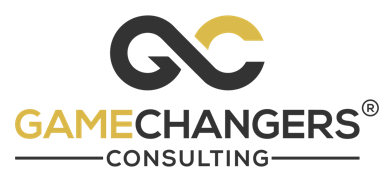Implementation & Management: Turning Strategy Into Results
BOOSTING RETENTION THROUGH PEER CONNECTION & BELONGING
Experience the Gamechanger Challenge App in Action!
TRANSFORMING ONLINE LEARNING THROUGH CONNECTION & BELONGING
Experience the Gamechanger Challenge App in action!
Strategic Planning Templates & Samples
Every sector faces a unique set of challenges, opportunities, and growth patterns, thus strategic planning does not and cannot use a “one size fits all” approach.
From nonprofit, healthcare, IT, human resources, marketing, supply chain, and all the sectors in-between need a strategic planning specific to the context of their sector in order to realize long-term viability.
Industry specific strategic planning addresses developing strategies that are based on the unique needs, risks, and opportunities of the sector in a way that leads to measurable outcomes, efficiencies, and growth sustainability in a given sector.
In this guide we review sector-specific strategic planning, offering sector-specific methodologies, leading practices connections to strategic planning frameworks you can bring to your organization.
What Is Strategic Plan Implementation?
Strategic plan implementation refers to executing the steps outlined in your corporate strategic plan or company strategic plan. This includes:
Translating goals into measurable objectives
Assigning responsibilities and deadlines
Deploying resources effectively
Tracking progress through KPIs
Tip: U.S. organizations often fail at execution due to unclear roles or lack of monitoring systems. Strong implementation bridges strategy and results.
Steps to Implementing a Strategic Plan
1. Communicate the Plan
Share the strategic goals and objectives with all stakeholders.
Ensure employees understand their role in achieving outcomes.
2. Develop a Strategic Action Plan
Break goals into actionable steps.
Assign tasks, resources, and timelines.
Use a strategic action plan template for consistency.
3. Align Organizational Resources
Budget, technology, and personnel should reflect the priorities of the strategic plan.
Remove obstacles that could hinder implementation.
4. Monitor and Measure Performance
Track progress using KPIs and dashboards.
Schedule regular reviews to assess execution.
5. Adjust and Refine
Be flexible to market changes, organizational growth, or new opportunities.
Ensure continuous improvement of processes.

Strategic Action Plan & Template
A strategic action plan is a roadmap for achieving your strategic goals. It typically includes:
Goal or Objective – What you want to achieve
Action Steps – Specific tasks and initiatives
Responsible Owner – Who is accountable
Resources Needed – Budget, tools, personnel
Timeline – Start and end dates
Key Performance Indicators (KPIs) – Metrics to measure success
Download our free Strategic Action Plan Template for U.S.-based businesses and streamline your plan execution.
Aligning Goals & Objectives
Clear strategic plan goals and objectives are critical. Goals define what you want to achieve, while objectives make them measurable.
Example Goal: Expand market presence in the U.S.
Example Objective: Increase sales by 20% in 12 months in target regions.
Pro Tip: Always ensure objectives are SMART (Specific, Measurable, Achievable, Relevant, Time-bound).

Strategic Growth Planning
Strategic growth planning focuses on scaling your organization effectively. Key elements include:
Market expansion strategies
Product or service innovation
Revenue growth forecasting
Risk management
Tip: Growth plans should integrate seamlessly with your company strategic plan to avoid operational strain.
Succession Planning & Leadership Development
Strong execution depends on strong leadership. Succession planning ensures your organization has capable leaders ready to step into critical roles. Leadership development programs strengthen managerial skills and align leaders with strategic objectives.
Identify high-potential employees for key positions
Provide mentorship, training, and stretch assignments
Link leadership development with strategic priorities
U.S. organizations that prioritize succession planning report higher retention and better long-term performance.
Corporate & Company Strategic Planning Integration
Corporate strategic planning ensures alignment between company vision, operational plans, and individual team objectives.
Use cross-department collaboration to connect strategic goals with daily operations.
Communicate progress at executive and team levels.
Adjust the corporate plan as needed to maintain alignment with the evolving market.
Strategy Without Execution Is Just an Idea
The true power of a strategic plan lies in implementation and management. From strategic action plans to succession planning and leadership development, execution ensures your organization moves from vision to measurable results.
Take action today—turn your strategic plan into tangible outcomes.
FAQ
1. What is strategic plan implementation?
Answer: Strategic plan implementation is the process of converting goals into measurable actions. It involves assigning responsibilities, setting timelines, allocating resources, and tracking KPIs to ensure the organization’s strategic objectives are achieved effectively.
2. Why is strategic plan implementation important for U.S. organizations?
Answer: Implementation ensures that your strategy doesn’t remain on paper. In the U.S. business environment, it connects long-term goals with daily actions, promoting accountability, performance tracking, and measurable business growth.
3. What are the key steps in implementing a strategic plan?
Answer: Typical implementation steps include:
1️⃣ Communicate the plan across teams.
2️⃣ Develop a detailed action plan.
3️⃣ Align resources and budgets.
4️⃣ Monitor KPIs.
5️⃣ Adjust strategies as needed.
These steps help U.S. organizations execute strategy successfully.
4. What is a strategic action plan?
Answer: A strategic action plan is a detailed roadmap that turns strategy into action. It outlines specific goals, tasks, responsible owners, resources, timelines, and key performance indicators (KPIs) for tracking progress.
5. How can a strategic action plan template help my organization?
Answer: A strategic action plan template provides structure and consistency in execution. It saves time, ensures no critical step is missed, and aligns every department with the company’s strategic priorities.
6. How do I align goals and objectives during strategy implementation?
Answer: Start by defining broad goals (what you want to achieve) and SMART objectives (how you’ll measure progress). Align departmental plans and employee KPIs with these objectives to ensure organization-wide coherence.
7. What tools are used to monitor and measure implementation success?
Answer: U.S. organizations commonly use dashboards, performance scorecards, KPI trackers, and project management software (like Asana or Monday.com) to track progress, ensure accountability, and refine execution.
8. How does succession planning support strategic plan implementation?
Answer: Succession planning ensures leadership continuity by identifying and developing future leaders. This stability supports consistent execution of strategic initiatives, even when leadership changes occur.
9. What is leadership development in the context of strategic planning?
Answer: Leadership development equips managers and executives with the skills to drive strategic initiatives. It links personal growth with organizational goals, strengthening performance and decision-making capacity.
10. How do corporate and company strategic planning connect?
Answer: Corporate strategic planning sets the overall direction, while company-level planning translates that vision into departmental or operational objectives. Integration ensures alignment between corporate vision and daily actions.
11. What are common challenges in implementing a strategic plan?
Answer: Common challenges include unclear responsibilities, lack of communication, poor resource allocation, and weak monitoring. Successful U.S. organizations overcome these by maintaining transparency, strong leadership, and regular KPI reviews.
12. How often should a strategic plan be reviewed or updated?
Answer: Most organizations in the U.S. conduct quarterly or semi-annual reviews to assess progress. Regular evaluation ensures that your plan stays aligned with market changes, new opportunities, and evolving business priorities.
Take the Next Step
Ready to move from planning to performance? - Schedule a free consultation here, or reach out to us at [email protected]
© 2025 Gamechangers Consulting. All rights reserved.
